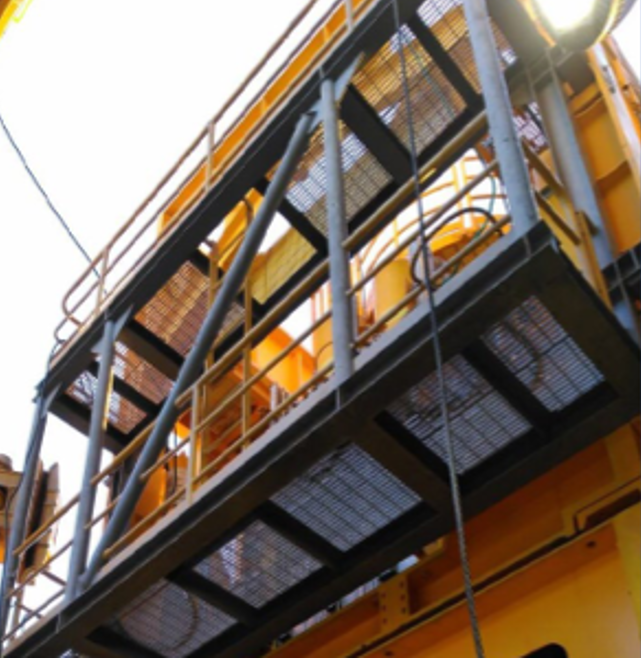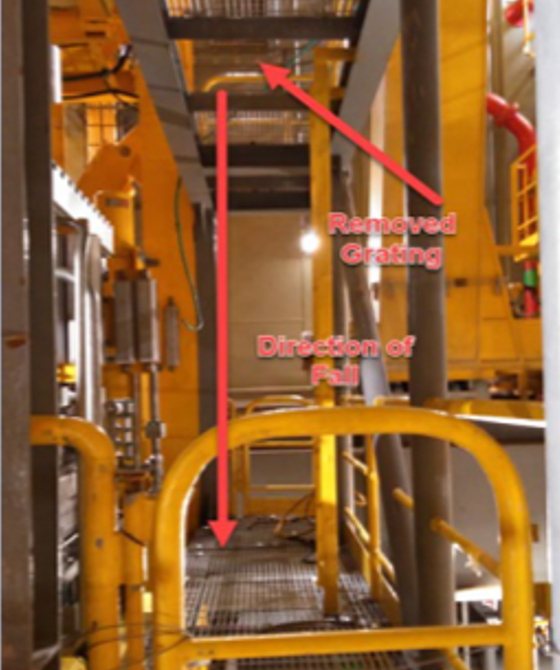BSEE: person fell through open hatch
What happened
The United States’ Bureau of Safety and Environmental Enforcement (BSEE) has published Safety Alert 489 relating to a person who was injured after a fall through an open hatch. The alert reiterates the need to remain vigilant of your surroundings.
A worker on a blowout preventer platform fell through an open hatch cover that had been removed due to damage. The worker sustained injuries to his leg and knee.


What went wrong
Multiple factors contributed to the incident, including a lack of situational awareness for potential hazards, inadequate fall protection measures, and the failure to 1) properly secure the hatch covering the hole, 2) take corrective action after the cover was removed, and 3) alert other personnel to the hazard.
The BSEE notes that the offshore environment can present challenging and potentially dangerous working conditions that require constant situational awareness. Everyone should be reminded of the importance of situational awareness and continuously checking your surroundings for potential hazards. Situational awareness applies to various work situations, including loose grating, damaged handrails, hot work areas, loads being lifted above or around you, red zones, and production and well operations related to pressure. This vigilance can be the difference between life and death.
BSEE recommends that operators and their contractors, where appropriate, consider doing the following:
- Check your surroundings prior to starting work for any potential hazards;
- Identify and document hazards and then communicate these to all personnel;
- Ensure the proper fall protection is used when working at heights;
- Check temporary equipment and work platforms for hazards prior to use;
- Use a spotter to help identify and communicate any hazards when working at heights;
- Install barricades and “flag up” areas with questionable walking or working surfaces. Soft barricades (e.g., caution tape) may be temporarily used, but hard barricades should be installed;
- Ensure ladders that connect decks have safety gates that swing closed when not held open;
- Remind personnel to stay vigilant of their surroundings when working on or near elevated work platforms;
- Remind personnel to work at a pace that allows for continual reassessment of dynamically changing work environments;
- Follow approved procedures for the work being performed and outlined in the job safety analysis.
Members may wish to refer to:
Safety Event
Published: 11 November 2024
Download: IMCA SF 22/24
IMCA Safety Flashes
Submit a Report
IMCA Safety Flashes summarise key safety matters and incidents, allowing lessons to be more easily learnt for the benefit of all. The effectiveness of the IMCA Safety Flash system depends on Members sharing information and so avoiding repeat incidents. Please consider adding [email protected] to your internal distribution list for safety alerts or manually submitting information on incidents you consider may be relevant. All information is anonymised or sanitised, as appropriate.
IMCA’s store terms and conditions (https://www.imca-int.com/legal-notices/terms/) apply to all downloads from IMCA’s website, including this document.
IMCA makes every effort to ensure the accuracy and reliability of the data contained in the documents it publishes, but IMCA shall not be liable for any guidance and/or recommendation and/or statement herein contained. The information contained in this document does not fulfil or replace any individual’s or Member's legal, regulatory or other duties or obligations in respect of their operations. Individuals and Members remain solely responsible for the safe, lawful and proper conduct of their operations.
